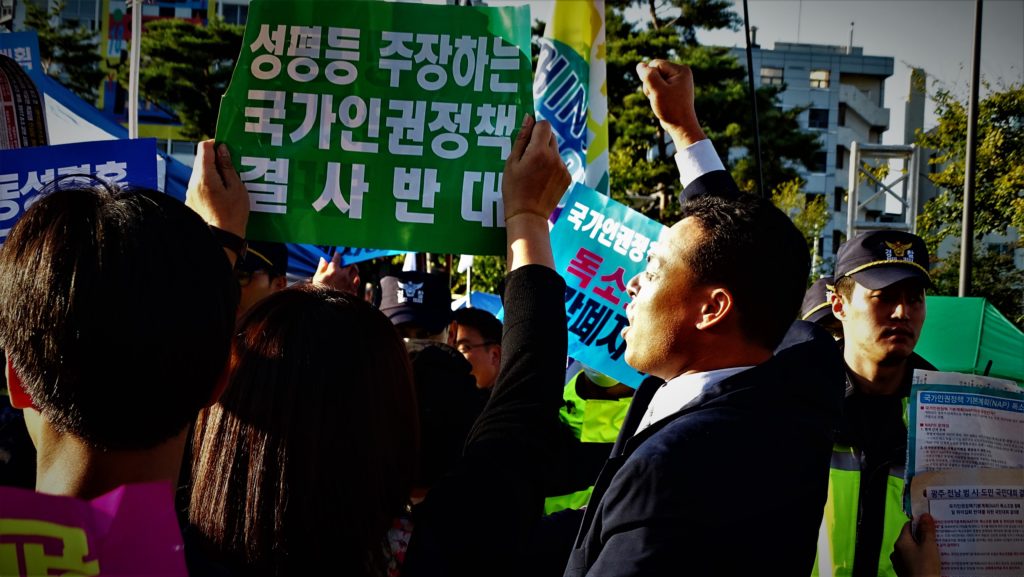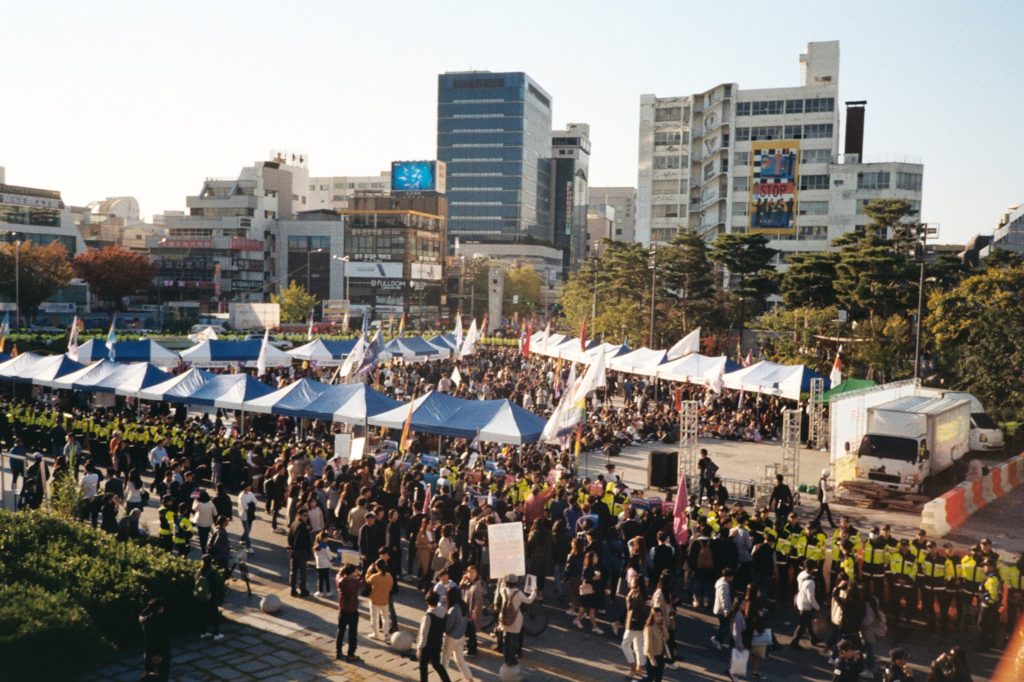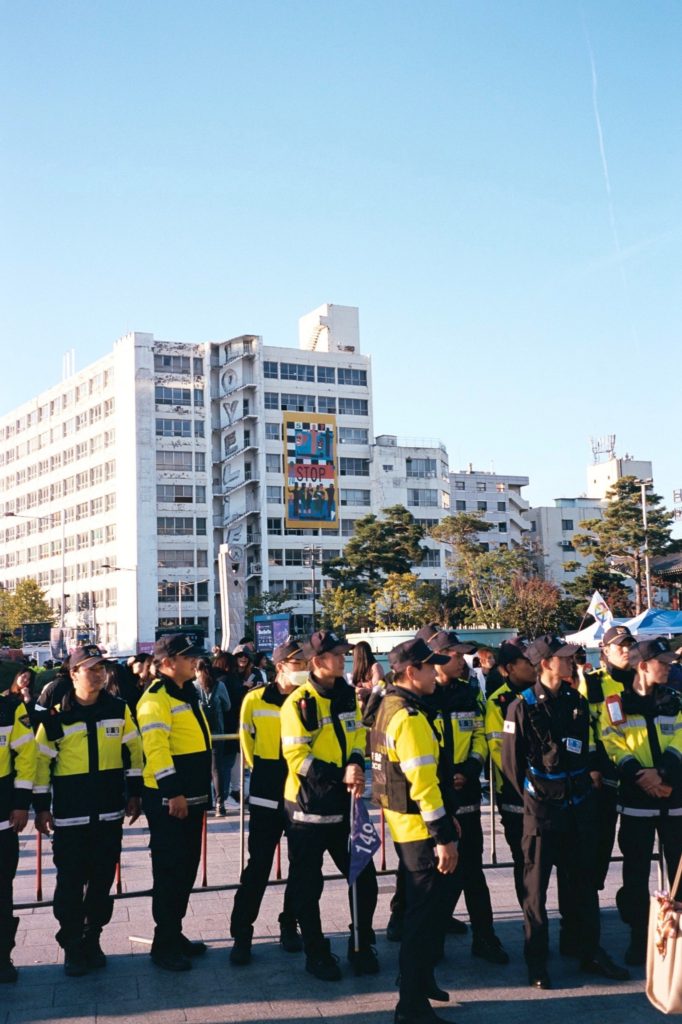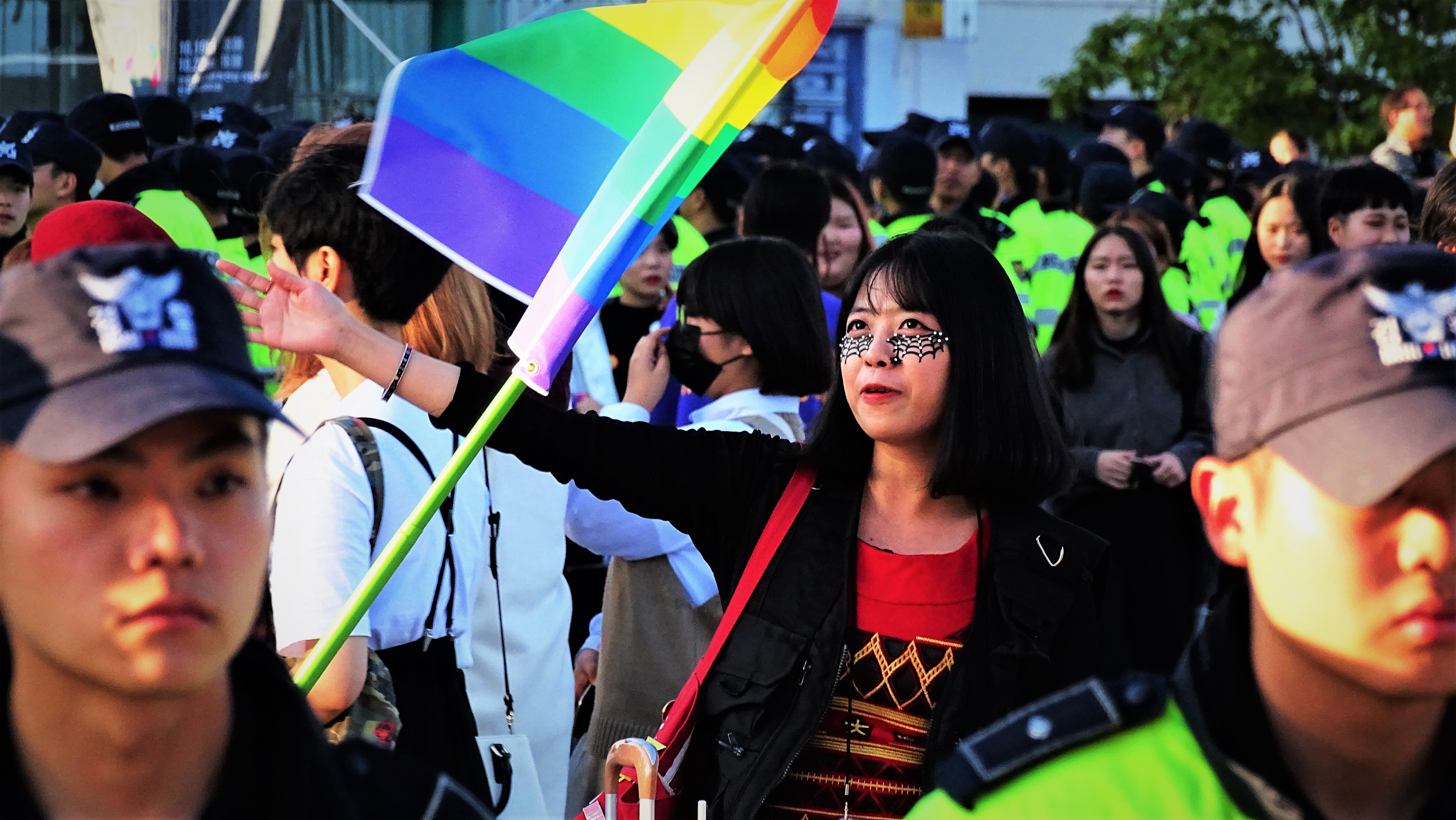Making History in Gwangju: Inside Its First Queer Culture Festival
Written by Kristy Dolson
Photographed by Isaiah Winters and Ryan Berkebile
You know that expression: “Third time’s a charm”? Well, this was my third pride event and it was definitely charming. After the uber-party of Toronto Pride and the overwhelming noise and crowds of Seoul, Gwangju’s first Queer Culture Festival was quiet, intimate, and more community driven. I could feel the links of solidarity between the oftentimes disparate groups under the LGBTQIA+ umbrella. A quick primer for the uninitiated: L = lesbian, G = gay, B = bisexual, T = transgender, Q = queer/questioning, I = intersex, A = asexual, and the + ensures that all are welcome in the community, regardless of how they self-identify. When I was at the pride parade in Toronto last summer, I did not feel like I was part of a community. I felt like I was at a big party, with different cliques all vying to be the biggest and the best. But here in Gwangju, I was blown away by the simple outpouring of love and support for the Queer Culture Festival.

The organizers and attendees demonstrated remarkable courage. When I rocked up to the festival, I was overwhelmed by the number of police officers: an unbroken line of neon jackets forming a human barricade against the steel fences already in place around the perimeter of the small ACC festival space. I knew they were there for the attendants’ safety, but it still made me anxious. I had to walk myself all the way around the festival, and then find a quiet spot to sit and message my friends for the courage to push my way through the crowd of antagonized protestors that had blocked the entrance. To keep people safe, there was only one opening in the fence, which functioned as both entrance and exit, and the flow of people going in and out was tightly regulated by the organizers. It was both impressive and scary when you thought about it.
Once inside, I immediately began searching for earrings and badges, and was not disappointed when I came across the Rainbowstore booth. If you are looking for pride swag in Korea, I encourage you to check out their website at rainbowstore.net, although you may need a Korean to help you navigate the checkout section. There were an impressive number of booths with merchandise, activities, and information. Once I met up with my friends, we made the rounds and I am proud to say I restrained myself. I picked up business cards and pamphlets to share with Korean teachers and quite a few stickers and badges for myself. My main goal was to acquire a badge or pin that specifically said “Gwangju” on it. I was pointed in the direction of the official Queer Culture Festival pin for Gwangju, which depicts the 5.18 Memorial with a rainbow background. It is certainly Gwangju, but I was a little disappointed that it did not actually say “Gwangju.” But then my friend pointed out that he had bought a packet of cheaper badges and almost all of them had “Gwangju Queer Festival” written on them. I was elated and could not hand over my 3,000 won fast enough when I finally tracked them down.

The vast majority of festival-goers were teenage students. Walking among them, I felt my heart expanding; to witness these young people fearless in the face of protests, wearing pride flags as capes, waving handwritten signs – in English and Korean – that told protestors that they would not back down. One of the most popular booths was actually a free sign-writing booth that had a huge line throughout the entire festival. A few choice signs I spotted in English read “F*** off!”, “Love is love,” and “Do whatever you want.” Another friend of mine had a homemade sign that said “Free Hugs,” which she held aloft as we marched down Geumnam Street. It was my first time marching in a pride parade. The third time’s a charm, right?
In Toronto, the annual pride parade is corporate, loud, and frenzied, and you cannot just join in. In Seoul, I had become overwhelmed by the constant music blasting from the loudspeakers and the heat and the crowds long before the parade even got started. But in Gwangju, everything came together, and I was swept into the march along with my friends. It was beautiful and uplifting, and words cannot properly describe how it felt to be part of that epic historic moment.

It was a march. There were no floats, no dancers, and no corporate sponsors. Just a few hundred people, the majority of them teenagers, and a contingent from Korea PFLAG (Parents, Families, and Friends of Lesbians and Gays) walking down the street waving flags and signs proclaiming their love, support, and solidarity for marginalized people. The police officers flanked us on all sides, their arms linked together to keep the protestors at bay. The protestors were made up of three different Christian organizations and many of them were bussed into the province specifically to protest this event. They waved large pink and blue flags with Korean and English messages. One flag read “Come back home” while another had images of same-sex parents with children that read “This is not a family.” It was difficult to see everything from inside the march, but later news articles showed bird’s eye pictures of the protestors surrounding the parade route and pushing against the police. I am glad I was blissfully unaware.
Inside the march, it was strength, unity, and dignity. When the protestors lay down in front of the truck to halt our progress, a chant of “Gwaenchana! Gwaenchana!” (괜찮아! 괜찮아! / It’s okay!) rose up. We were stopped for about ten minutes, but everyone remained calm and peaceful. There were no violent outbursts or feelings of restlessness. In a culture famous for ppalli ppalli (빨리 빨리, hurry hurry), these students had no problem waiting it out. They knew history was on their side. The police were reluctant to arrest or even touch the protestors, so after some time, the parade leaders were forced to simply turn around. This happened twice as we attempted to circle the block. Eventually, we made it back to the festival area, and the feeling of euphoria was palpable.

I had to catch a bus back to Yeosu, so I sadly could not stay for the evening party. People wanting to leave the event grounds after the parade had to wait for the exit to clear, as the protestors had returned to block the entrance once again. They were fiercer than before: It took 15 minutes of patiently lining up before I finally persuaded the gatekeepers to let me out in order to catch my bus. Coming face to face with an angry mob of Christian protestors after the safety and welcoming atmosphere of the festival was a moment of true terror for me, but it passed quickly as I smiled and sidestepped my way through the crowd to the subway station entrance. I had to duck out early, but in my heart I was celebrating late into the night. I was and still am so proud of Gwangju – my Korean hometown. There is certainly still a long way to go and much work to be done. But we are the City of Light. Let us trust the younger generations to be our beacon and show us the way.
The Author
Kristy Dolson lived in South Korea for five years before taking a year off to travel, read, and spend time with her family in Canada and Australia. She holds a Bachelor of Education and moved to Yeosu this year, where she splits her time between teacher training at the new Jeollanamdo International Education Institute and reading about feminism so she can write her own stage-play on the subject.





